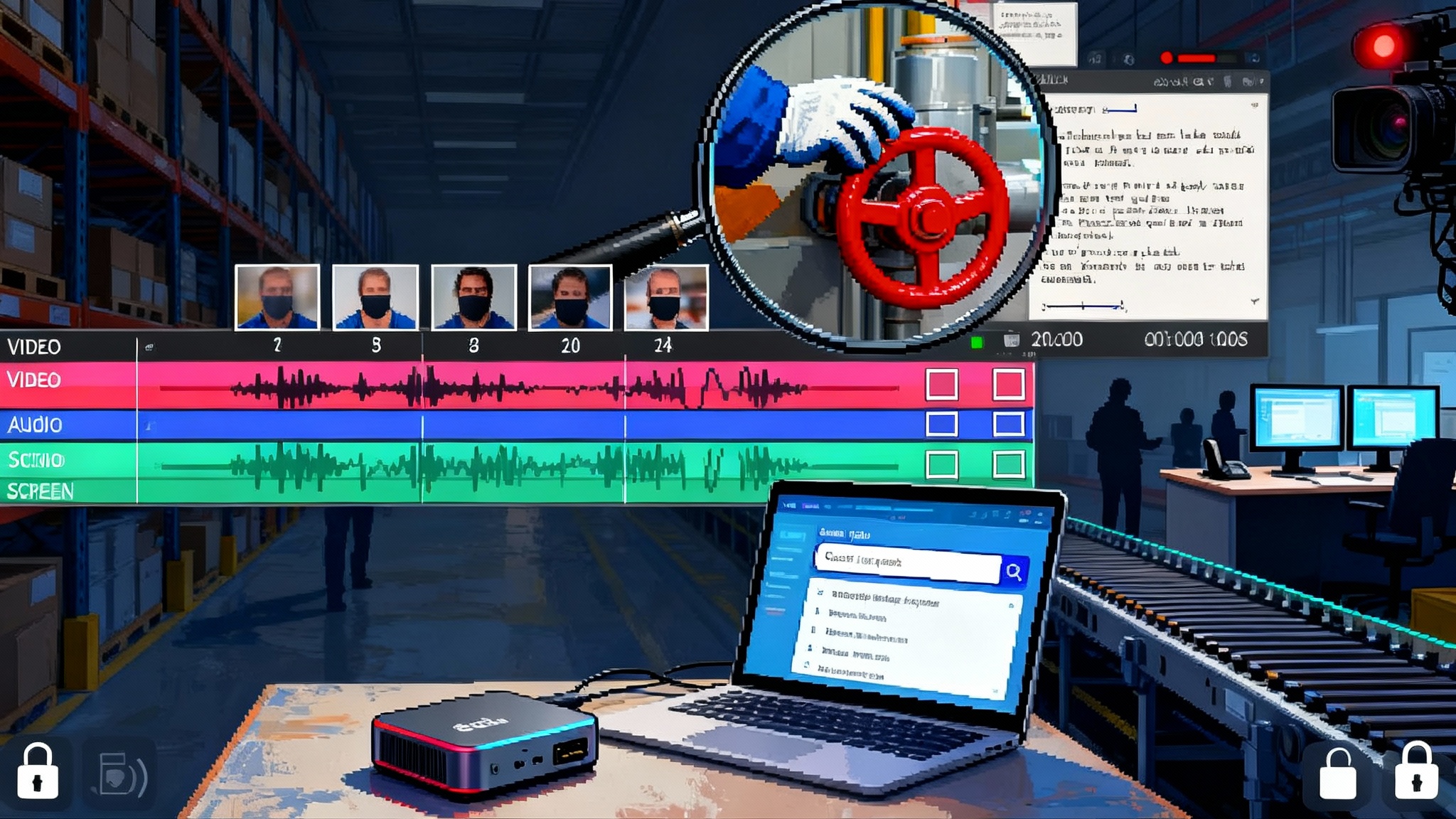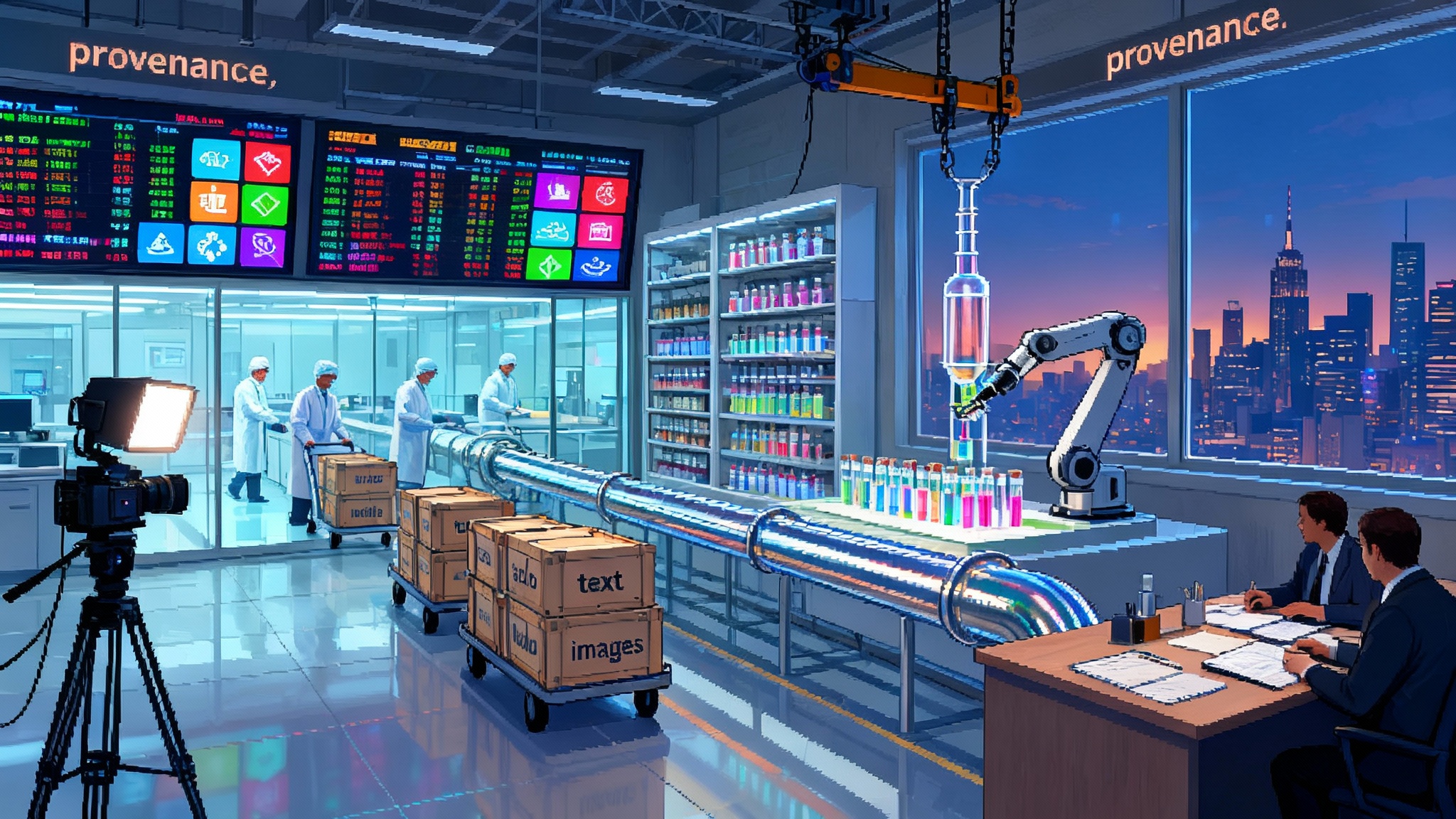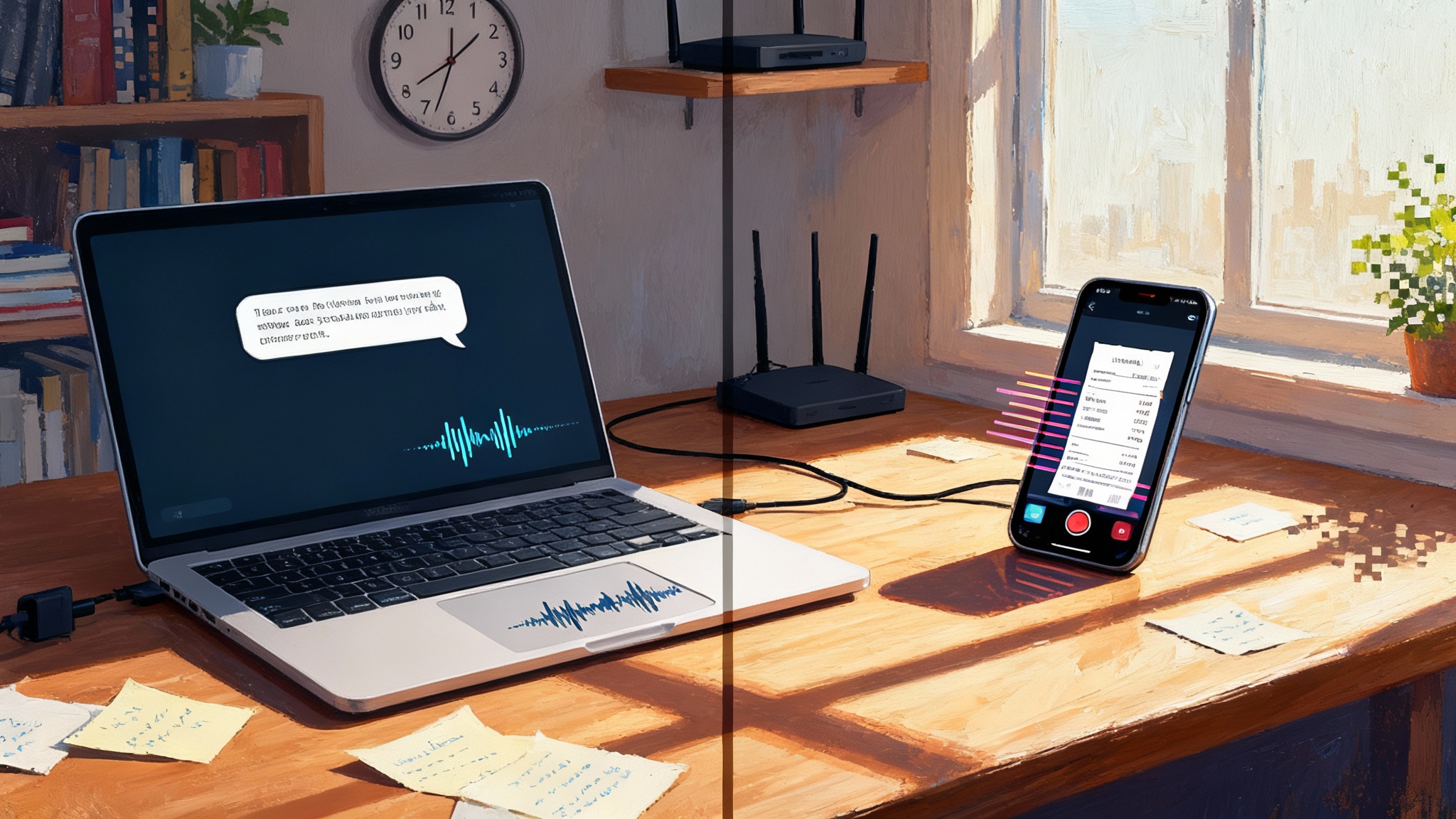Realtime Multimodal RAG Turns Footage Into Live Context
Vendors just shipped native video and audio embeddings with temporal indexing. That flips recordings from after-the-fact archives into queryable context for agents and copilots, if paired with smart redaction and consent at the edge.

The week recordings became searchable while they happen
This week a quiet change landed in developer tools. Major vector and search stacks added first-class support for video and audio embeddings, along with time-aware indexes. A handful of frameworks followed with streaming adapters, so that live camera feeds, microphones, and screen captures can be chopped into moments, embedded, and queried as they unfold.
Put simply: your footage is no longer a pile of files. It is a searchable memory. That flips recordings from dead archives into live context for agents and copilots. The implications touch field work, customer support, quality assurance, accessibility, and the core interface of software itself.
To make this useful and trustworthy, two other pieces must ride alongside the new indexes: streaming redaction with consent logs, and on-device pre-filtering. When the capture layer removes what it should not see, and proves who asked for what, the result is a copilot you can deploy at the edge and inside regulated enterprises without turning every room into a data leak.
What just shipped, and why it matters
Until now most retrieval systems indexed text chunks. Some added speech-to-text and then indexed transcripts, which helped but lost what video is best at: scenes, gestures, layouts, and timing. The new drops do two things differently:
- Native video and audio embeddings: Models now map short clips and audio spans into vectors that capture visual scenes, actions, and sonic events, not just words.
- Temporal indexes: Indexes store vector entries with start and end times, so a search returns precise moments. You can jump to 01:32.5 to 01:34.8 where the valve started to leak, rather than sifting through a 30-minute recording.
With these in place, retrieval augmented generation becomes multimodal and real time. An agent can answer with citations that point to the exact seconds of evidence and the exact pixels it used, while a human reviews the same frame. That is what trustworthy looks like.
From dead recordings to live context
Most organizations already record. Bodycams in the field. Desktop capture for support. Meeting video. Factory feeds. These recordings help after the fact. The shift is that they can now help during the fact.
- A technician asks, “Did I tighten all three bolts on that housing?” The agent queries the last five minutes of helmet footage and replies, “Two bolts are verified at 10:31.2 and 10:32.0. The third appears loose at 10:32.6,” with frame links.
- A support lead types, “Show me the last time the customer typed their card number.” The system jumps to the agent’s screen capture at 14:23, already blurred, with an audit log of who searched and why.
This is retrieval that acts like a memory, not a search engine. It gives the right moment, fast, with evidence.
The near-term stack that makes it work
The pieces you need are surprisingly practical. You do not need a giant model to start. You need fast small models, good segmentation, and a pipeline that never blocks.
Segmenters: cutting the day into moments
Rather than indexing hour-long files, you break streams into meaningful chunks.
- Video segmenter: Detect scene changes, motion bursts, or task boundaries. Default to 2 to 5 second windows, with boundaries snapped to high-change points.
- Audio segmenter: Voice activity detection slices silence from speech, and short tonal events from ambient hum. Work with 20 to 40 millisecond frames aggregated into 1 to 3 second spans.
- Screen segmenter: Use lightweight layout change detectors and app event hooks. When a window, tab, or form field changes, start a new segment.
Each segment receives timestamps, a capture source ID, and a few cheap features like average motion, dominant colors, or app name to help later filtering.
Temporal indexes: remembering when, not just what
A temporal index stores vector entries keyed by time. The index can:
- Return the top matches with start and end times.
- Merge adjacent matches into a single span.
- Respect source-specific privacy rules, such as “do not return matches from app X” or “return redacted thumbnails only.”
Think of it like an inverted index for moments rather than words.
Small vision-language models and voice activity detection
For on-device or edge capture, you want models that are:
- Small enough to run at a few frames per second, such as 3 to 8 frames per second on a laptop GPU or modern phone.
- Good at local tasks: keyframe captioning, object tags, simple action labels, on-screen text detection.
- Paired with speech recognition and speaker diarization that work offline.
You do not need a giant model to understand that “a gloved hand turns a red valve” or that “customer says the card was declined.” You need a model that is available and predictable.
Event-driven pipelines
The capture layer should publish events rather than block on processing:
- Segment created: includes timestamps, capture source, raw pointers.
- Redaction applied: faces blurred, numbers masked, windows excluded.
- Embeddings computed: vectors for video clip, audio span, screen text.
- Index update: insert entries into the temporal index.
- Query issued: agent asks, “Find the moment the alert turned red.”
- Retrieval and response: return segments and references, then stream a grounded answer with links to the frames.
Events allow you to retry, throttle, and swap components without breaking the flow.
Streaming redaction and consent
Redaction must happen before indexing. The pipeline should:
- Blur faces not in the authorized roster.
- Mask payment fields, SSN patterns, or anything that matches customer-configured regular expressions.
- Respect app-level blocks, such as never capturing a password manager window.
Consent logs should capture who initiated capture, what was captured, how long it will be retained, and how searches over that data are authorized. These logs matter later when policy teams ask who looked up what, and why.
On-device pre-filtering
Bandwidth and privacy benefit when you filter early. On the capture device:
- Compute embeddings locally and send only vectors and redacted thumbnails.
- Drop segments that are pure noise or redundant.
- Cache short bursts and flush only if an event of interest occurs.
Edge pre-filtering improves latency and lowers risk because raw media leaves the device only when required.
Four immediate use cases
These are ready to build today with the new indexes.
- Field operations memory: Helmet cams and phone video become searchable the moment they are captured. Ask, “Where did we miss a safety clip?” The agent returns the second where the harness is unclipped and the next second when it clicks in.
- Support and escalation: Screen capture paired with voice transcriptions lets teams find the exact step where a customer got blocked. Search, “Show the first failed payment attempt after the policy update.” The copilot jumps to the right form and highlights the error banner.
- Quality assurance and compliance: Continuous logging across production lines or back-office workflows can be audited by asking questions. “Which claims were approved while the risk flag was red, and show me the frames.” Reviewers stride directly to the evidence without scrubbing through hours.
- Accessibility and recall: With permission and on-device capture, individuals can ask, “Where did I park?” or “What did I agree to about the budget?” The system returns moments from their day with clear visual and audio context, not just a summary.
From chat to “ask your day”
Chat was a good starting point. It teaches the model to answer in plain language. Real value appears when the chat box is bound to your timeline.
A practical interface looks like this:
- A live timeline that scrolls as your day unfolds, with colored bands for video, audio, and screen.
- Natural language search that returns moments as cards with instant jump links.
- Hover previews that reveal redacted thumbnails and short transcripts without playing audio.
- “Show me” controls that step backward and forward by event, not by seconds.
- A share button that exports only the cited moments with signed provenance, not the full recording.
When you can ask your day, your copilot becomes a partner. It shows its work and respects the boundaries you set.
Latency budgets beat giant context windows
Developers love bigger context windows. They are useful for long documents. For live multimodal work, latency budgets matter more. The agent must find and ground an answer before the user shifts attention.
Set budgets and build to them:
- Sensor to segment: 100 to 200 milliseconds to cut a span and tag it.
- Redaction pass: 50 to 150 milliseconds with GPU or neural engine acceleration.
- Embedding compute: 50 to 200 milliseconds for video and audio vectors.
- Index insert: 5 to 20 milliseconds on-device or at the edge.
- Query to first relevant moment: under 300 milliseconds p50, under 600 milliseconds p95.
These numbers are reachable with small models and local indexes. They are hard with giant models and round trips to distant regions. Design for proximity and speed. Use approximate nearest neighbor search with a small top-k, such as 5 to 10, because the agent will rerank based on the question.
A practical tip: index short spans, but store links to the raw media so the player can fetch just in time. Keep the index hot and the media cold.
Policy and compliance contours
If this capability is coming to the enterprise and the edge, we need crisp guardrails that are easy to verify.
- Retention default-off: Do not retain by default. Retain only when a policy, case, or explicit user action requests it. Set segment time-to-live at the source and enforce it at the index. Show the countdown in the UI.
- Per-frame provenance, C2PA style: Capture a signed chain that says which device recorded the frame, which model applied redaction, and which user ran each query. When a clip is exported, the signature travels with it. Reviewers can verify that the moment has not been altered.
- Consent logs: Record who consented, when, and for what scope. Make consent queries auditable. If someone revokes consent, remove segments and tombstone their entries in the index.
- Discoverability limits: Limit how broad a search can be. For example, restrict queries to the last 30 minutes for field devices unless a supervisor extends scope. This stops fishing expeditions and reduces the blast radius of a leaked token.
- On-device first: Treat cloud as an optimization, not a requirement. If raw media must leave the device, encrypt end to end and keep an immutable audit trail of access.
These constraints do not slow builders down. They are the price of trust.
A minimal build sheet
You can stand up a working prototype in a week with commodity parts. Here is the blueprint:
- Capture: Desktop agent for screen, mobile app for camera and mic. Publish into a local event bus.
- Segmenters: Basic scene change on video, voice activity detection for audio, and on-screen layout change for desktop.
- Redaction: Face blur and number masking via a small vision model and a pattern library. App blacklist for sensitive windows.
- Embeddings: Small vision-language model for keyframe captions and action tags. Audio embeddings plus speech-to-text for search terms.
- Temporal index: A vector store that accepts time ranges, plus a secondary store for metadata and policy tags.
- Runtime: An agent that translates questions into retrieval queries, reranks matches with context, and streams an answer with links to evidence.
- Governance: A consent service, retention policy engine, and a provenance signer that stamps every exported clip.
Rough data model for an index entry:
- source_id: device or app
- t_start, t_end: seconds from start of capture or absolute time
- modality: video, audio, screen
- vector: 256 to 1024 dimensions
- redaction_tags: faces_blurred, pii_masked, window_blocked
- policy_scope: retention_ttl, shareable_to, query_limit
- preview: redacted thumbnail or caption
Query path:
- Parse the question into intent and constraints. Example: “when did the alert turn red on the billing dashboard” becomes visual color change on app Billing within today.
- Build a vector query from the text and optional image hints.
- Retrieve top segments with timecodes.
- Rerank using metadata filters and local reranker.
- Stream the answer with citations and jump links.
Measuring trustworthiness
You cannot improve what you do not measure. Add these to your dashboards:
- Retrieval precision and recall at segment level. Use temporal overlap metrics such as intersection over union between returned spans and hand-labeled ground truth.
- Grounded answer rate. Percentage of claims in the agent’s reply that are backed by cited frames or spans.
- Latency percentiles for each stage. Watch the p95.
- Redaction miss rate. Randomly sample frames for human review and track misses by type.
- Consent mismatches. Any query that touches data outside its consent scope counts as a critical bug.
These metrics create an error budget that aligns engineering and policy.
What breaks, and how to fix it
- Duplicate or near-duplicate moments flood results: Add diversity penalties during reranking and collapse adjacent matches.
- Embedding drift across model updates: Freeze model versions per index shard and schedule background re-embeddings with A/B validation.
- Over-redaction kills utility: Show a privacy knob that lets authorized users switch between preview-only and full review with elevated permission, and track every switch.
- Edge devices run hot: Duty-cycle heavy components. Run full video models only when motion rises above a threshold or when on charger and Wi-Fi.
- Hallucinated claims: Force the agent to cite a timecode for each factual statement. If it cannot cite, it must phrase as a hypothesis and request confirmation.
Why this shifts product strategy now
When the index talks time, the interface talks moments. That changes roadmaps.
- Design around timelines, not threads. Threads are for conversation. Timelines are for reality.
- Invest in latency budgets and redaction by design. A fast, respectful system beats a sprawling context window that still misses the point.
- Build export with signatures from day one. Make it as easy to prove a clip’s integrity as it is to share it.
- Ship small models close to the sensor. Keep the big ones in the back room for periodic summarization and training.
What to watch next
- Better small models for actions. Expect models that reliably tag procedures like tighten, seal, scan, acknowledge, submit.
- Per-frame provenance baked into cameras and screen recorders. The capture device will sign what it sees.
- Hardware assist for redaction. Neural engines on laptops and phones will blur and mask at video frame rates without draining batteries.
- Tighter app hooks. Desktop environments and browsers will expose event streams that tie UI changes to timecodes.
- Policy kits. Expect templates for retention, consent, and discoverability that legal can accept with minimal edits.
Takeaways
- The unlock is here: native video and audio embeddings with temporal indexing make live footage searchable.
- Trust comes from the pipeline: stream redaction, consent logs, and on-device pre-filtering before you index.
- Build for speed: set latency budgets and design for proximity. Choose small models where it matters.
- Start with concrete use cases: field ops memory, support escalations, compliance audit, and accessibility.
- Shift the UX: from chat to ask your day. Give users moments, not monologues.
If we get these pieces right, your day becomes a dataset you control. Not a surveillance tape. A memory you can query, with boundaries you set.



